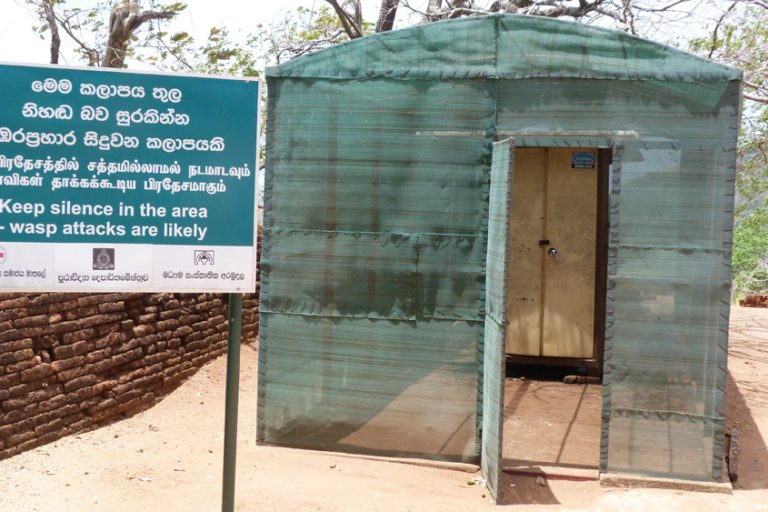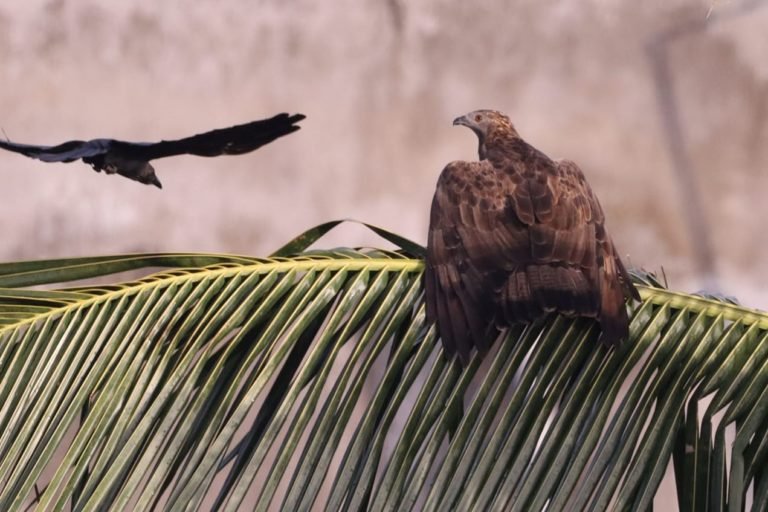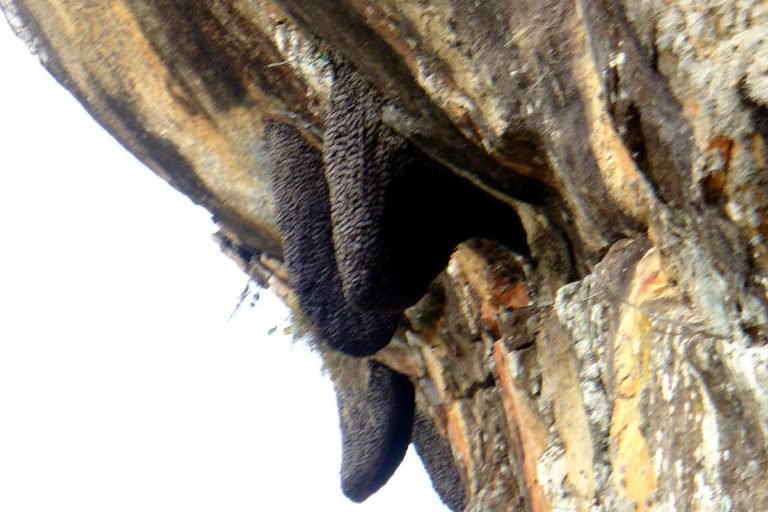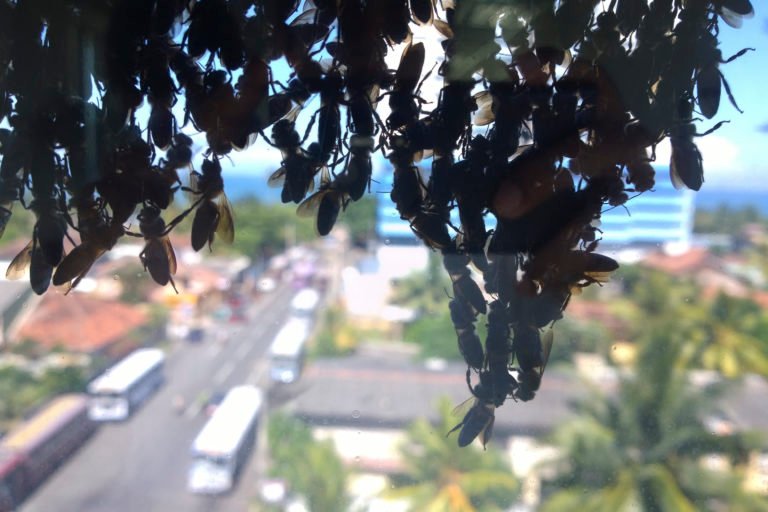- A leading bee expert in Sri Lanka has attributed seemingly unprovoked bee attacks on visitors at the Sigiriya rock fortress to poor toilet habits by the latter.
- With no toilet facilities at the popular tourist site, visitors urinate in a concealed corner of the fort, leaving puddles that the bees are drawn to for the sodium and sugar content.
- Wasantha Punchihewa says providing toilet facilities at Sigiriya would be a positive step toward ending the attacks, and a welcome change from authorities’ repeated efforts to eradicate the bee colonies.
- “Bees are not evil, and we can coexist if we can maintain a healthy distance and avoid unnecessary close encounters,” he says.
COLOMBO — They’ve been called, erroneously, wasps and hornets, but the aggression is undeniable. The giant honeybees (Apis dorsata) of Sigiriya, an ancient rock fortress in central Sri Lanka that’s popular with tourists, have become notorious for dive-bombing visitors in large swarms.
For years, researchers have put forward possible explanations for why this was, but none of them seemed to fit. The prevailing theory is that the sound of visitors to Sigiriya, a UNESCO World Heritage Site, disturbs the bees. Signs are posted around the site asking visitors to keep quiet so as not to disturb the “wasps” that build their colonies on the rock walls.
But for Wasantha Punchihewa, a leading Sri Lankan bee expert and consultant to the government on bee conservation and beekeeping, this reason doesn’t add up.
“I have seen places where there are bee colonies located in close proximity to very noisy places, but the bees don’t show signs of being disturbed,” he tells Mongabay.
Another theory is that the bees get riled up during raids on their colonies by oriental honey buzzards (Pernis ptilorhynchus), and subsequently attack anything in sight. But Punchihewa, who visits Sigiriya frequently to study the bee colonies, says he’s never witnessed a buzzard swooping on the colonies, nor have victims of the bee attacks.
Then there’s the theory that the bees’ flight path from their colonies to the flowers at the bottom of the fortress is disrupted by the visitors entering through a stairway, and that these encounters can easily trigger attacks.
While not discounting this as a potential reason for the Sigiriya bees’ behavior, Punchihewa says he’s unconvinced that it’s strong enough reason for these stinging encounters between bees and humans. With the problem getting so bad that authorities have previously tried to chemically burn the colonies, Punchihewa has made it his mission to get to the real reason for the bees’ aggression. And he believes he’s found it.

For want of a toilet
As he tells it, Punchihewa was at Sigiriya, in search yet again of clues to the bee attacks. He was waiting near the famous lion’s paw at the entrance to the onetime royal palace, keeping a close watch on the bee colonies. That’s when he spotted two women move toward a corner of the fortress that was partially concealed behind large water tanks. They emerged after a few minutes and hurried back to join their tour group.
As the bee colonies were located just above that area, Punchihewa walked over for a better look at the hanging hives — and was surprised to find about 30 bees had landed in a wet spot on the ground.

This concealed corner, it turned out, was commonly used by visitors for urinating in, given that Sigiriya has no bathroom facilities. The bees were wallowing in the urine, in much the same way that butterflies wallow in wet soil to absorb the minerals. Other insects are known to wallow in urine, Punchihewa said, for the sodium in it (or, in the case of people with diabetes, for the sugar).
Punchihewa posited that by urinating in an area where bees congregate, visitors were indeedposing a potential disturbance to the insects and setting off the swarms.

Coexisting with bees
Punchihewa has submitted this theory to the authorities, but so far they’ve taken no action in response. Providing toilets at the tourism site would be a positive first step, he said, and a welcome change from the authorities’ previous approaches to dealing with the bees.
Past measures included several attempts to remove the colonies entirely to ensure visitor safety. In 2010, there was an attempt of chemically burn the colonies, but the bees returned the following year.
“Bees are not evil, and we can coexist if we can maintain a healthy distance and avoid unnecessary close encounters,” Punchihewa says.

Sri Lanka is home to 149 species of bees. These insects are the main pollinators of plants in the wild as well as of agricultural crops. According to the United Nations’ Food and Agriculture Organization (FAO), three out of four crops across the globe that humans rely on for food are themselves, at least in part, reliant on pollinators like bees. In light of this, the U.N. has declared May 20 as World Bee Day, to raise awareness about the importance of bees.

In Sri Lanka, Punchihewa says, society has failed to appreciate the role of bees. People who find bee colonies in their home gardens or inside buildings typically respond by having them removed, out of a fear of attacks, he says.
“But if we keep our distance, bees won’t attack humans,” he says.
Banner image of giant honeybee (Apis dorsata) colonies at the Sigiriya rock fortress, by Malaka Rodrigo.













